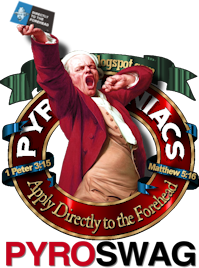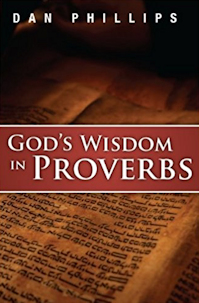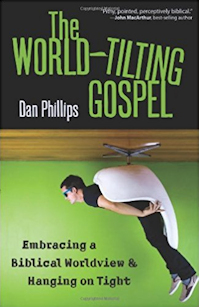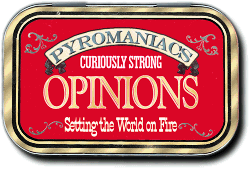I posted a little something [about 6 years ago] about the necessity of grasping nuance in order to have a full toolkit, intellectually. One reader posted this in response:
Nuance is the post-modern enemy of clarity.And this is sadly, exactly wrong. Let me give you a graphic example:
Yes, you can quote that if you wish.

This is a picture of a real landscape, and it's interesting in its own way, but it is completely without any nuance. That is, it is rendered in plain black and white, and while we can get the general lay of the land (so to speak), we really can't tell anything about this place.
This one is only slightly better:

The difference is subtle -- the edges where the contrast changed are not strictly white or black -- it's gray-scale, but it's sort of the wrong kind of gray scale. There's no question there's more subtle use of web-friendly colors in this picture, but it doesn't gain us anything in perceiving the picture.
This would be one example of the misuse of nuance: it's sort of a doodling along the edges where we already understand there are meaningful differences, but it doesn't add anything to what we get in the end. If this were a discussion, it would be like talking about how many different ways you can sit in the pew at church (because you should go to church, amen?) rather than understanding that going to church to worship is for your sake, and for the sake of the body of Christ.
And just to be sure we cover all the bad examples first, here's another bad example of nuance:

It's almost completely unintelligible. In fact, I'd wager that if you hadn't seen the first two images, you'd have no idea what this image was at all. It's completely useless.
But what has happened here is just another kind of the same misuse of subtlety that we got in the first one -- it goes a lot farther, and blurs all the edges to the place where all distinctions are lost. But doodling at the edges is not at all what nuance ought to achieve. Simply making the edges softer is not nuance: it's smearing.
On the other hand, this is a valuable application of nuance:

Like the last two images, this is a gray-scale image -- but look: the grays are not simply blurring the edges. They are indicating meaningful characteristics like terrain, plant life, the brightness of the sky, detailed distinctions among objects in the middle ground, etc.
This picture demonstrates significantly more nuance than any of the previous images, and tells us far more about the landscape we are viewing. And if, for example, I was going to take a hike through this place, I'd much rather have this more nuanced view of the landscape than the black and white. Why? Because more relevant details are exposed in the more nuanced image.
And how much more dramatic is the difference between the gray-scale image of this landscape and this rendering:

You can actually make out what kind of foliage there is in this landscape now, and whether it is all sand or if it has some ground cover. It actually looks like a real place once all the nuances are understood. But before we take that as the whole point, let's examine one last rendering of this image:

This is a snapshot of the center of the color photo blown up to see the pixels. This would be another example of misunderstanding nuance -- because while all the details are there, the context is completely lost. We can see all the colored dots -- and how different they are from each other -- but we can't see the relationships anymore. We are literally majoring in the minors here, seeing every jot and tittle of detail and missing (quite literally) the big picture.
Nuance is not an enemy of clear thinking: it is the result of clear thinking. Being able to grasp the distinctions in a matter without over-blowing them or distorting them into smears takes patience and a certain degree of practice.
And before anyone thinks this doesn't apply to Jesus, the Gospel or theology, think about how often all but the color photo view of an issue erupts in public discussions of theology.
Now back to your business.












34 comments:
Great post, Frank. What a vivid example of how taking one point (small or large) out of context leads you from getting the real picture. You have to have the proper focus on all points of Scripture working together to get the full (and correct) picture. Much the same as those images that are out of focus could have been mistaken for anything from a riverbed to a foggy mess.
Day after day I come to this site and read the articles, only to find people commenting about the graphics. I suppose I'm just not that graphically oriented; I usually haven't even noticed them. So what am I supposed to do with a post that is all about the graphics?
I had to re-read the post, and I decided to take as a starting point the literal definition of "nuance" and graphics 3 and 4. Nuance is a subtle change of shading and detail. So, nuance can either obscure or clarify, depending on which way the shading is changed.
Once I saw it that way, I was impressed with the entire post; in fact, all the graphics made sense to me. When people want to nuance an article (rather than a picture) we can easily see what the effect of their changes of shading were.
It's like when you go to an ophthalmologist and he's go those various lenses he clicks into place in front of your eyes. Some of them make the image clearer, some less so. And it makes all the difference in the world.
I thought if you stared at the image for thirty seconds and then look at the wall, you'll see Jesus.
wow great post....funny my thinking goes along spirtual lines when I see pics like this,..maybe its my shady past in Contemplative Mysticsm that taught me to look at things like that. I tell you it gives Calvinsim a wonderfull new hue to see it in color and clarity like this.
I'm not really sure the analogy is valid in a theological setting. If the Word provides the detailed, full-color photo on a subject, then fine; however if it only shows a subject in a pixelated or through a glass dimly way, then invariably some preacher has to be the one to fill in the details. That's where the trouble begins and I think, how 98% of the nuance in the modern church is developed: At the hand of some man rather than the Wrod of God.
Think harder about the analogy.
I think it's a terrific post. Good point made really well.
To tag my own thought, I think that when the people I complained about praise a post or book as "nuanced," they really mean the third picture. That is, they love it when folks take sharp, edged, cutting issues and make them seem all soft and fuzzy and safe.
Fuzzy is still little too bear.
Great post.
I think having a good grasp on the ‘whole picture’ of Scripture gives us the ability to freely accept some nuances while completely rejecting others.
It would be like digitally inserting a picture of a spacecraft into the full color photo above. It just wouldn’t seem right.
I remember reading this the first time it came around. It’s still a classic.
That's because you're a classic, Crigler.
:-)
This is somewhat relevant to the post. I heard Glen Beck this morning and he was discussing Franklin Graham's appearance on some tv show last night explaining what a true Christian is.
Beck said, "I don't care what religion you believe but if you're out there doing good works like Mother Theresa or Gandhi, you're a Christian. You don't think Gandhi is up there right now hanging with Jesus?"
Talk about missing (huge) nuances. Beck's climbing his own ladder to his own theology of glory. Yikes!
What poet said, you can see God in the details?
Enjoyed the post, but also came away a bit dismayed at how stupid we as people are because we need something like nuance to enhance our understanding of issues that ought to be fairly clear. I guess I'm hindered by scar tissue from too many battles with Emergent folks.
I liked the post, Frank. Really. And that's not a nuanced statement. ;)
@Dan - Exactly.
One approach is about sharpening the focus on the microscope to reveal the deadly bacteria.
The other is about airbrushing.
And now I'm thinking about Jackson Pollock and how it was that his paintings became so popular and piqued the interest of the public toward abstract impressionism.
Glenn Beck is an idiot. He's the Morton Downey Jr. of the 21st century.
I'd be pleased to get a half hour with him to discuss the Christian faith - in any forum, any venue.
Regarding Glenn Beck, I loved when Todd Friel had the red telephone with Beck's picture on it. He said he wanted Beck to call him to talk about Christianity. Beck never called but made fun of Friel (not by name) by impersonating his voice and asking what a real Christian is.
I'd pay to hear dialogue betwixt Beck and Turk. Yet it'd probably be ultimately disappointing as I don't believe Beck would get it.
It's unsurprising that Friel was ignored by Beck.
@Fred Butler: LOL.
@Frank Turk: I pity GB as I do a lot of "conservatives." He knows something is wrong with our culture but he doesn't know the correct solution.
Some guy once said somewhere on the internet that the Gospel is the solution to culture.
@ Tom: that little hand in your photo is nuanced!
@ Fred: did you take Frank out for coffee? You might have hurt the artist that is inside of Frank.
Again another challenging post by The Turk.
Word:indem
Maybe Beck should get an invite to ER3.
Let me see if I am on the same page with you. While I see many places where nuance is critical in understanding and discussing many things related to the Gospel, theology and other church matters, one area that comes to mind, as an example, is in regards to issues regarding the emergent church, ER2 debacle and the celebrity ministry discussions. For example, the philosophy of finding how few things we can come up with, that we can agree on, and still be considered a Christian and then doodling at the edges of the doctrinal distinctions so that they become a smeared homogenization that no longer recognizes the clear differences that would divide the two camps.
I also understand you to mean that points of division are not necessarily good or bad in and of themselves but that we can smear them at certain critical points, such as blurring what it means to have an orthodox, biblical view of the Trinity, so that it renders a distorted view of the bigger picture. In this case being, “what constitutes a biblical understanding of the Gospel (who is Christ?)” among other necessities of a clear understanding of this issue.
Am I understanding you or am I barking up a tree with no squirrels? If I'm out in left field, where did I miss the point?
Also, when you say that understanding the distinctions takes patience, how exactly do you mean? Do you mean the patience needed to fully examine and weigh those differences in light of scripture rather than shooting from the hip as we engage in discussion of these matters?
I remember talking with some lovely nuns from Poland about the Lord's Supper.
She told me that Jesus said, "You must eat My flesh, and drink my blood. And so this is life."
And so we went on to discuss this truth of the Scriptures, and it was very interesting.
Of course, I told her Jesus' words were to be taken spiritually. And spiritual truth is real truth.
Anyhow, this is what popped into my mind when I was reading your post on Nuance. Not sure if it fits really.
I did also think how I have a few Black and White photos that are striking, and reveal more than if they were color photos. It's like that sometimes.
CCinTN:
I mean that picture 1 is probably good enough to be saved by, picture 2 is probably good enough to avoid massive errors, picture 3 is can't save anybody, picture 4 is probably what our denominations/theological camps are doing to the Bible and the Gospel, and picture 5 is the actual Gospel as declared by Scripture.
The problems arise when we resort to the doodling that creates pictures 2 and 3 when what we are really trying to represent or reflect is picture 5. That is: there is a kind of delicate touch which is utterly useless and actually counter-productive that produces an end product nothing like the source.
And by "patience" I mean that it is infantile to think that someone can get mature quickly. James 1 would be my exposition of that statement.
Aaron Snell:
That guy should write a book.
"Maybe Beck should get an invite to ER3."
When that actually happens, these words will come back to haunt you, because... you just can't parody this stuff anymore.
Frank:
Yeah! And because it was about the GOSPEL, you know the GOSPEL Coalition blogs would be all over it, and the GOSPEL preaching guys would be all over it, and it'd be GREAT!
No way they'd treat a book like that like some, oh, I don't know... some SEX manual or something.
Hey Frank, I think you left one very important detail out of your post:
Where on Earth is this place, so I can go hiking underneath that arch?
A picture without a name may provided a perfect representation, but it doesn't help anyone get to the destination.
(That may have accidentally brushed on the theological.)
Great post, though. Now I want to go hiking... :(
Frank:
Only if he had Chantry write chapter summaries :)
DJP:
I think it was the cover, man. That guy in the upside-down chair really freaks a person out.
Good job, Frank! I used a similar illustration last year at a pastor's conference in India before I taught a class on hermeneutics. I explained that the goal was not to get more overall information, but to make the information that they already had available to them in the Bible clearer.
Two things:
1. Frank of course I took your advice and thought more about the analogy, but I admit I still didn't get it until you explained it, here! Thank you. (and duhhhhh on me)
2. I want to point out to everyone that Frank really can't dialogue with Glenn Beck, because Beck is a Mormon and they don't drink coffee.
I'd abstain for a week to get 30 minutes with Beck.
I'm pretty sure 30 minutes of debate with you would drive him back off the wagon!
In other words... can I watch?
Post a Comment